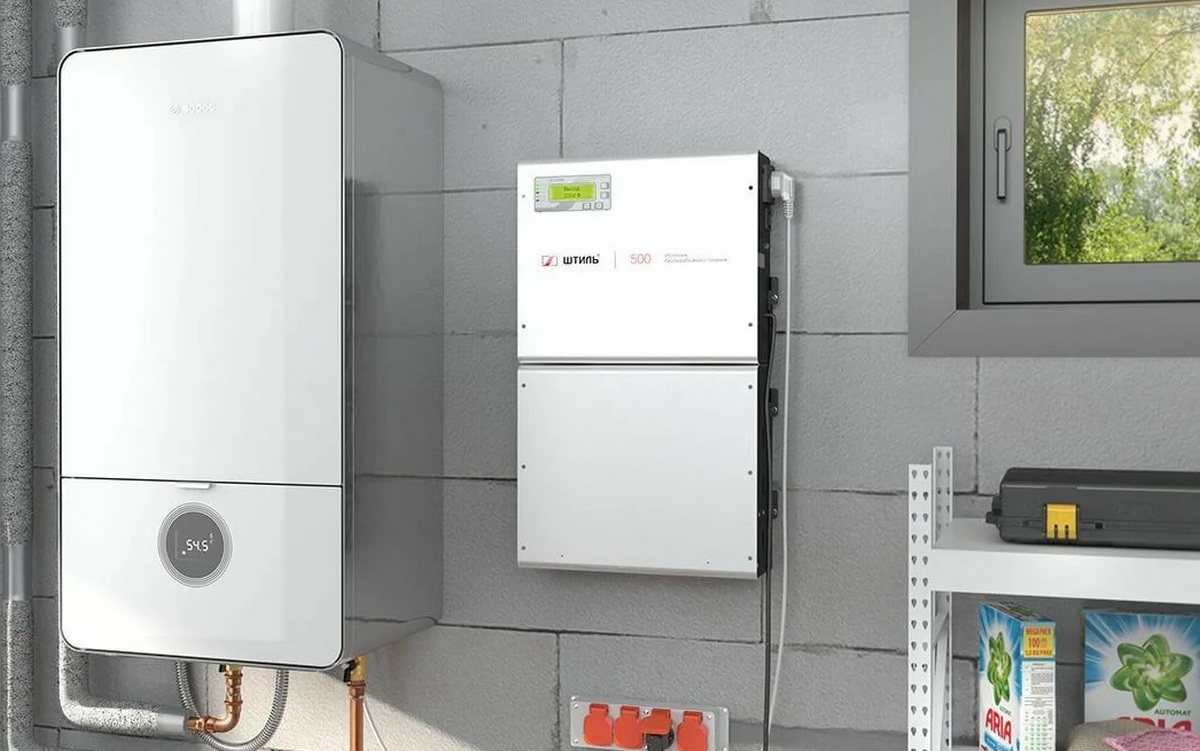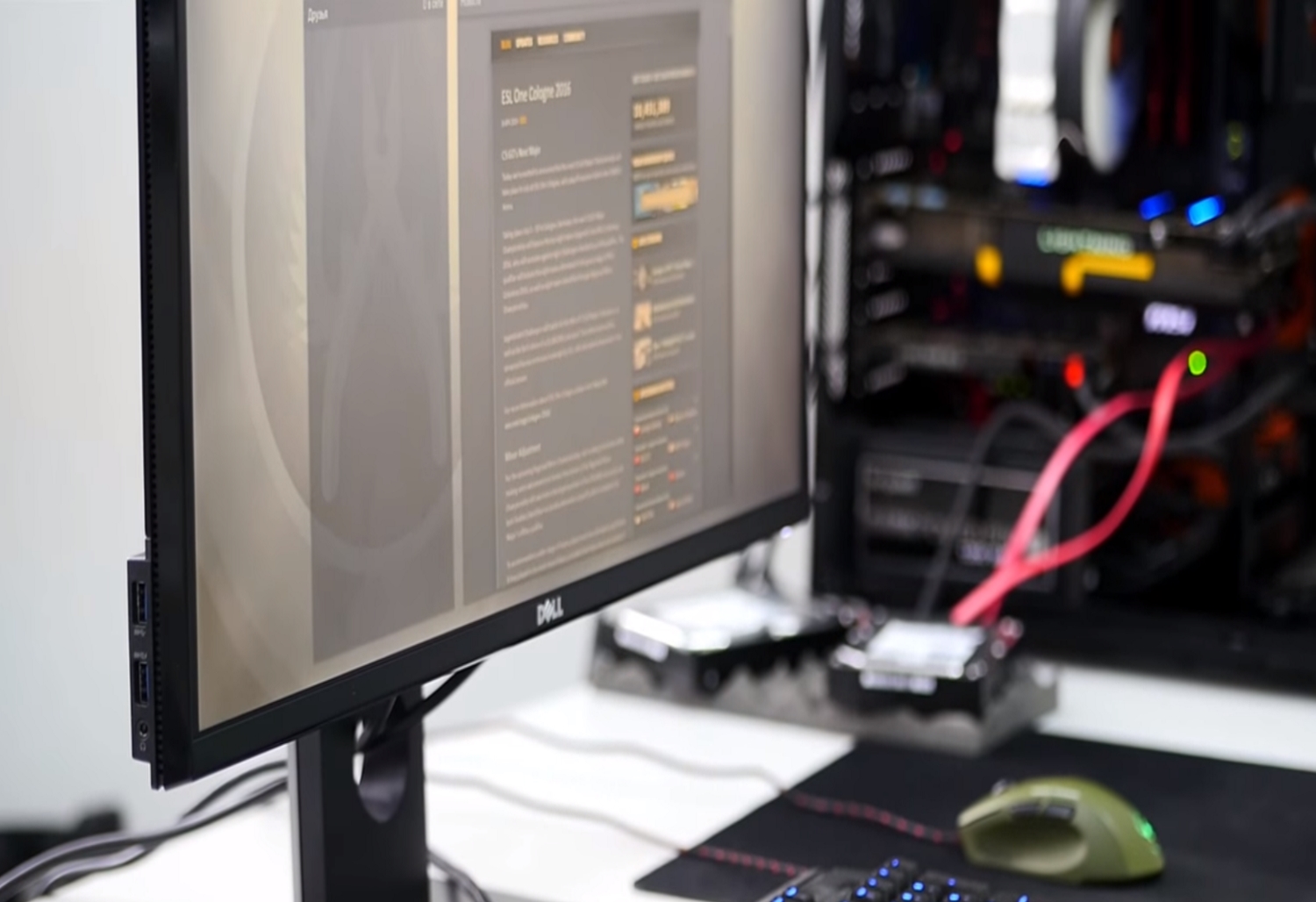Rating of the best uninterruptible power supplies for gas boilers for 2025

Today's gas boilers, in addition to the base fuel, also need to be supplied with electricity. It feeds several components at once: a circulation pump, an ignition module, a GSM and ventilation unit, a control board. All these parts must work permanently, even when the power supply is interrupted. For this, it is required to equip the boilers with independent (uninterruptible) power supplies, they are also UPS. Such a source will not only continue to supply power to the equipment during a power outage, but will also prevent dangerous consequences (for example, burnout of circuit boards) during a sudden power outage.

Content [Hide]
General information and types of modern UPS
The UPS (Uninterruptible Power Supply) is a self-contained system that monitors the voltage in the electrical network and instantly switches the power of the equipment to the batteries when there is a power outage.
Conventionally, modern UPS can be divided into three main types.
- Reserve.
They act as an intermediary between the internal battery and the power grid. During their operation, they do not change the incoming voltage and even do not control it at all. The device turns on only when the current goes beyond a certain range, which happens, for example, during a voltage drop below the set value or in the absence of it. Reserve models are considered a budget option, do not make much noise, do not take up much space.Most often, they are used only to safely transfer the boiler to the “off” position, since they are able to ensure its full operation for only a few minutes. The possibilities for adjusting and configuring the operation of such a UPS are very limited.
- Interactive.
They are able to analyze the incoming voltage and respond to the smallest current fluctuations in the mains. They play the role of full-fledged stabilizers, and when switching to battery operation, they do it extremely quickly, without changing the voltage sinusoid. This method of operation significantly increases the safety and service life of the electronic components of the boiler. As a result, when the power is turned off, interactive models normalize all voltage parameters, bringing them to the proper values.
- Continuous.
These samples are the best solution for protecting gas heaters. With them, the equipment will always be supplied with power, even if it comes from the UPS batteries. When mains power is supplied, the device will constantly recharge its batteries, so they are always in a “ready to use” state. When activated, time is not spent on adjusting the parameters, so the sinusoid is maintained in a stable state. The obvious disadvantages include some noise of the device and its high price.
Technical specifications
General functionality
The more powerful the uninterruptible power supply model, the more functions it can perform and the more options it has to fine-tune it. This applies not only to direct operating parameters, but also to optional features. These include equipping the device with a liquid crystal display for ease of operation or giving it the ability to give an audible signal about its operation.The “cold start” function is considered important, which automatically starts the operating mode when the mains voltage drops. The GSM control module will not be out of place, through which you can find out at a distance about the state of the gas boiler, its warming up, the need to start and stable communication with the power supply and the network.
Power calculation
Some users of gas boilers believe that it is necessary to select an uninterruptible power supply in relation to the sum of the power of all heater modules. This is a gross mistake, because the starting currents will always be greater than the linear ones. For example, if the pump in the boiler has a nominal value of 300 watts, then at the start it will consume 500 watts. This jump appears only at the launch stage and quickly disappears, but if the necessary indicator is not provided for the jump, then the launch will not occur. Accordingly, the power of the UPS should be one and a half times greater than the rated power of the boiler in order to ensure its constant and trouble-free start. If, however, a source with a lower power is used for the heater, this will gradually lead to wear of the equipment.
Battery capacity
It is no secret that the higher the battery capacity, the longer the heater can be powered from it. The accompanying documents for each power source indicate the period, i.e. how long it will be able to provide the connected equipment with energy at full load. For backup (budget) models, this period is a few minutes, while the most expensive samples are able to maintain battery life for several hours. Today's technology even allows you to expand this parameter, for which you just need to buy and connect an additional battery.
Switching speed
For expensive continuous models, this parameter does not matter. Standby and interactive samples are powered from the mains, and when the current dries up there, they need some time to switch to the battery. From this it is clear that the shorter this period, the better. The most standard range is 3 to 10 milliseconds. It is always worth remembering that even a small gap in the supply of electricity will adversely affect the sensitive electronic components of the gas boiler.
Waveform (sine waves)
The output signal has the form of a sinusoid and the smoother its bends, the better it is for the boiler being serviced. Deviations from the standards of more than 8% on the sinusoid are considered improper. Bringing the sinusoid back to normal will require a complex UPS design (for all its high cost). Such deviations are almost never found in continuous devices, due to the peculiarities of their work. Although among the interactive and backup samples there are already models that support the smoothness of the signal at the hardware level. If the sinusoid is often in the wrong position, then this can lead to an early impossibility of starting the heater system at all.
Battery Charging Time
It may be necessary to use the battery not only during a complete power outage, but also during its periodic jumps. Especially often this situation occurs in old and worn-out electrical networks, so the presence of a UPS for a gas boiler in this case will be a justified solution. Accordingly, in order for the uninterruptible power supply batteries to be always ready for work, they must be charged very quickly. Care must be taken to ensure that the batteries are never completely discharged before the next recharge.The charging time will depend on the standard of the battery - gel batteries charge very quickly (1 hour), and fiberglass ones take longer (from 2 hours). Nevertheless, it should be understood that the UPS also gives a certain part of its power to the charging operation.
Additional protection
The best UPS model is able to protect not only the gas boiler equipped with it, but also itself from malfunctions. The most common types of problems encountered include:
- Reduced voltage in the network;
- High voltage impulses;
- Network interference;
- Short circuits;
- General overloads.
Each of these problems can harm the power supply itself, and the more protection it has, the better. The ideal solution would be, of course, the choice of a device with extended protection, but its price may seem very "biting". Based on existing standards, it can be noted that only continuous sources have a maximum of optional protection. They are able to identify and fix problems, preventing them from "reaching" the serviced device (i.e. gas boiler) and harming it.
UPS Location
It is preferable to place the device closer to an electrical outlet. If it is very large, then it is not necessary to hang it on the wall - you can place it on an impromptu shelf. At the same time, the placement of this electrical appliance must comply with the requirements of the "Rules for the operation of electrical installations in the Russian Federation." The distance between the appliance and the boiler or gas pipe must not be less than half a meter. It must be remembered that placing the power supply right next to the boiler is not a good idea. For normal operation of the uninterruptible power supply, its case should not heat up above +30 degrees Celsius, which will be difficult to achieve by placing the UPS next to the boiler.
Battery types
Modern uninterruptible power supplies for gas boilers use only lead-acid batteries. They are significantly heavier and larger than lithium ones, but cost less. Such batteries have sufficient sealing, they are famous for sufficient safety and do not need service. As a result, such elements of energy storage and nutrition are divided into two more subgroups:
- Gel;
- Fiberglass.
Silicon compounds are always added to the electrolyte first, from which it has a thicker consistency. Accordingly, the battery filler does not spill out even with a large transport shaking or when the device is overturned. The hydrogen and oxygen released during operation are qualitatively absorbed by helium and evenly interact with each other, forming water. This property provides additional protection during operation. It is worth noting that gel samples do not have liquid inside the body (in the usual sense of the word). Their design provides for the location in the body of several non-communicating flasks, in which electrodes coated with a viscous substance are installed.
In fiberglass batteries, the interior is filled with special porous mats that slow down the chemical reaction between hydrogen and oxygen. However, their electrolyte has a completely liquid consistency, and it easily flows out when the device is turned upside down or when it is strongly shaken. You need to know that in the event of a similar situation, it is strictly forbidden to collect the leaked substance with a simple rag, because it is a very strong acid.
Due to the better safety record, gel batteries are more expensive than fiberglass, and this gap is approximately 10-20% of the cost.However, if the UPS is not planned to be moved frequently, then there is no particular need to overpay.
Most modern uninterruptible power supplies are equipped with the option of connecting additional external batteries. It is important to understand here that the external battery is completely identical to the internal ones - so it is possible to evenly discharge / recharge the batteries, which will have a beneficial effect on their overall operational life.
Operating tips
When operating uninterruptible power supplies, you must follow a few simple rules:
- It is forbidden to place the uninterruptible power supply and external batteries to it in the immediate vicinity of heat sources. The optimum temperature for their operation is from +20 to +25 degrees, and the limit is +30 degrees Celsius.
- The room where the UPS is located must not be exposed to high humidity, as this can lead to the formation of dangerous water condensate inside the device.
- Connecting the UPS to the mains through surge protectors is undesirable - this will make it more difficult for the device to track power surges.
- If the design of the device provides for grounding, then it must be provided.
- After starting, the machine must be connected to the power supply as long as possible.
Difficulties of choice
When buying an uninterruptible power supply for a gas heater, several nuances must be taken into account. As a result, the device should:
- Have a proper output voltage sine wave;
- Have the right power in order to ensure complete energy independence at the right time of both the connected equipment itself and its pumps;
- Ensure sufficient charge of batteries and their trouble-free operation;
- Have the ability to withstand the required time of work in full autonomy;
- Ensure high-quality protection of any connected equipment from all kinds of problems that occur in the power grid.
Rating of the best uninterruptible power supplies for gas boilers for 2025
Budget segment
3rd place: “ACCORDTEC in a 7 Ah battery case. Uin. AC 165-264 V, U out. DC BBP-40"
votes 1
This UPS is in a case for a 7 Ah battery. Uin. AC 165-264 V, U out. DC BBP-40 is used to connect and power gas heaters, as well as various devices, such as electrical and radio equipment, video surveillance systems. It has built-in deep discharge protection. The power supply has a durable and stylish case. It can only be used indoors. This power equipment can be used in conjunction with fire and security alarm devices. The power supply is protected from overheating. The recommended price for retail chains is 1520 rubles.

- Battery protection from deep discharge;
- Compact body 164×169×72 mm;
- The strong metal case is steady against mechanical influences;
- Short circuit protection;
- Installation on the wall and dismantling does not require much effort.
- Little functionality.
2nd place: "APC by Schneider Electric Back-UPS BX500CI"
votes 0
A budget UPS with an output power of 500 VA / 300 W will switch to power supply from the built-in battery in 6 ms during power surges or power outages in a private house, a small cottage. Bright LEDs and an audible alarm will warn you about a low battery, the inclusion of autonomous operation.Unlike other models, it features automatic voltage regulation, three IEC sockets, quiet operation, and compact size. The recommended cost for retail chains is 7100 rubles.

- Silent;
- With automatic fuse;
- There is a cold start function.
- Not detected.
1st place: Soyuz PSU-500 10500
votes 0
This sample is suitable for all types of boilers, including gas ones, since the output signal of this UPS is a pure sine wave, the switching time is up to 4ms. Works with maintenance-free batteries that can be placed in residential areas even without ventilation! Principle of operation: when the mains electricity is lost, the SOYUZ UPS instantly switches to batteries, generating 220V / 50Hz at the output. As soon as the mains voltage appears, the UPS goes into battery charging mode, and the load is powered by the mains. The recommended cost for retail chains is 8900 rubles.

- Steady maintenance of pure sinusoid;
- Full environmental friendliness: without fuel, oil, exhaust, harmful gases and aerosols.
- Quiet operation;
- Full automation - does not require human intervention;
- Long battery life (up to several days);
- Perfectly protects electronic components of pumps and boilers;
- Easy and unpretentious to use, does not require additional maintenance costs;
- Provides reliable power to boilers, emergency lighting, septic tanks, circulation pumps.
- Automatic fan start for 10 seconds every hour.
Middle price segment
3rd place: "Powercom INF-800"
votes 0
This instrument is a line interactive device with a pure sine wave output. This model has the ability to connect 12-volt batteries with a capacity of 65 to 200 Ah. The UPS is suitable for powering and protecting against failures in the network of electrical appliances in offices, apartments and cottages. Also, the device is designed to connect gas heaters, water supply pumps, lighting. This model is multifunctional, has a voltage stabilizer AVR. The recommended cost for retail chains is 10,600 rubles.

- Automatic voltage regulator AVR (Auto Voltage Regulation);
- Ensuring a long autonomy by connecting external 12V batteries;
- Improved battery management to extend battery life
- Output short circuit and overload protection;
- Automatic charging of accumulators in the switched-off state;
- USB communication port.
- Not detected.
2nd place: Energy Garant-500 Е0201-0038
votes 0
The model is a source of supply of household appliances with a stable power supply. Suitable for gas heaters. It can also be used as a stabilizer and battery charger. The unit operates in a wide input voltage range. The built-in fan provides effective cooling of internal knots. Does not require special maintenance. The recommended cost for retail chains is 13,800 rubles.

- Full visual control of the configured parameters;
- Output voltage when powered by batteries - 220 V ± 1%;
- Output voltage frequency - 50 Hz;
- Overload protection up to 120% of power - 30 seconds of operation.
- Not detected.
1st place: "RUCELF UPO-1000T-24-I КА-00007820"
votes 0
The sample is designed to reliably protect the user's electrical equipment from any network failures, including mains voltage distortion or loss, as well as suppression of high-voltage impulses and high-frequency interference coming from the network. The Double Conversion UPS has the most advanced technology to provide quality power without interruption in powering the load when changing from online mode (mains power to the load) to offline mode (battery power to the load) and vice versa. Providing a sinusoidal output voltage, such UPSs are used for responsible power consumers who place high demands on the quality of the power supply of gas heaters and their pumps. The recommended cost for retail chains is 23,600 rubles.

- Extended warranty;
- Multifunctionality;
- Visual control of settings;
- "double conversion" technology.
- Not detected.
Premium class
3rd place: "ELTENA (INELT) Monolith E1000LT"
votes 0
This device will instantly switch to offline mode only in the absence of power supply or a significant voltage drop. During surges, the device will work as a stabilizer or frequency converter, ensuring uninterrupted operation and protection of the boiler and heating system. The front panel of the UPS has an LCD display that displays information about the remaining battery life, error code, parameters of the load level, operating mode, and battery charge.Using the control buttons, you can turn on / off the device, buzzer, select output voltage, activate frequency conversion, enable eco-mode, bypass or run self-diagnosis. The rear panel has connectors for connecting two external batteries, an input socket, a fuse, two output Euro sockets and ports for connecting to a computer or installing an SNMP card. The recommended cost for retail chains is 25,000 rubles.

- Eco mode;
- Power - 1000 VA / 800 W;
- "double conversion" technology.
- Batteries are sold separately.
2nd place: "Energy Pro-1700 12V Е0201-0030"
votes 0
The model works with various types of equipment: gas heaters and their pumps, home computers, servers, data centers. This model is equipped with a line-interactive system that allows you to switch to the battery in 10 ms when the main power is turned off. It also acts as a voltage stabilizer. The recommended cost for retail chains is 33,500 rubles.

- Stabilization accuracy ±5% (mains powered), ±1% (inverter mode);
- New color, informative LED display;
- Economic idling;
- Advanced intelligent battery charging algorithm;
- Modern universal housing with the possibility of wall mounting;
- The shape of the output signal in inverter mode is a pure sine wave;
- Battery charging status indicator;
- Connected load indicator;
- Input and output voltage values.
- Overcharge.
1st place: BASTION Teplocom-1000
votes 0
The advantage of uninterruptible power supplies of this brand is the official lifetime warranty.Moreover, the manufacturer promises to repair their UPSs free of charge during the entire declared service life of the device, even if they fail due to the fault of the owners. In general, the quality of BASTION products fully corresponds to such “altruism”. The recommended thousandth Teplocom has all the functionality necessary for the operation of the heating system, including the formation of the "correct" neutral, compatibility with generators and automatic bypass in case of overloads. The recommended cost for retail chains is 36,000 rubles.

- Lifetime warranty;
- There is a neutral forwarding;
- Can work with car batteries;
- Tolerance for input voltage frequency instability.
- High price.
Conclusion
The operation of all gas boiler systems is controlled on the basis of modern processors. To ensure the circulation of the coolant, economical circulation pumps are used. All of these systems require high-quality power supply. Power surges and power interruptions are not permitted. It is for these purposes and to ensure high-quality power supply to the equipment that it is necessary to use specialized uninterruptible power supplies.
new entries
Categories
Useful
Popular Articles
-

Top ranking of the best and cheapest scooters up to 50cc in 2025
Views: 131650 -

Rating of the best soundproofing materials for an apartment in 2025
Views: 127690 -

Rating of cheap analogues of expensive medicines for flu and colds for 2025
Views: 124518 -

The best men's sneakers in 2025
Views: 124032 -

The Best Complex Vitamins in 2025
Views: 121939 -

Top ranking of the best smartwatches 2025 - price-quality ratio
Views: 114979 -

The best paint for gray hair - top rating 2025
Views: 113394 -

Ranking of the best wood paints for interior work in 2025
Views: 110318 -

Rating of the best spinning reels in 2025
Views: 105328 -

Ranking of the best sex dolls for men for 2025
Views: 104365 -

Ranking of the best action cameras from China in 2025
Views: 102215 -

The most effective calcium preparations for adults and children in 2025
Views: 102011









